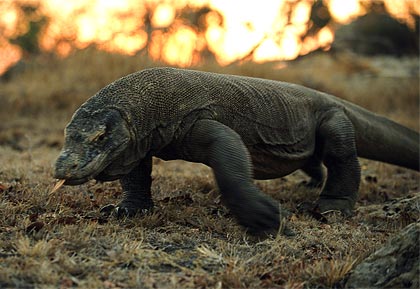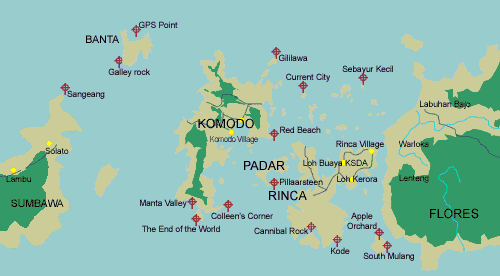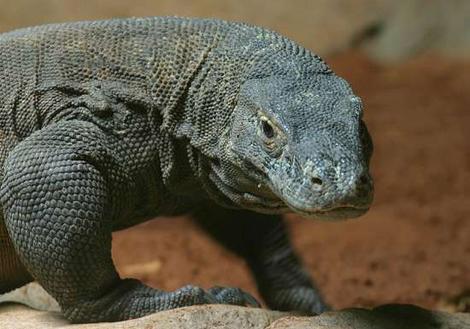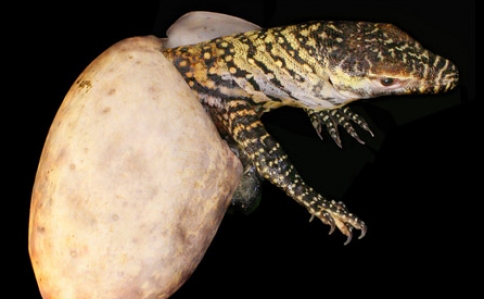KOMODO DRAGON
| YOUNG KOMODOS | STATUS |
|---|
|
The Komodo dragons are totally carnivorous and will eat anything they can overpower. While smaller Komodos have to be content with eggs, lizards, snakes and rodents, the larger ones hunt deer, wild pigs, water buffalos and even horses. Komodo dragons are cannibalistic, and adults will prey on young ones as well as old and sick dragons. Other dragons may make up to 10% of a dragon's diet.
|
 |
|---|---|
The Komodo dragon habitat consists of volcanic islands and if more were naturally created the Komodo dragon could easily swim and inhabit these because of their excellent swimming capabilities. The islands contain many steep slopes and have a very dry and arid climate, usually around 80F degrees (27C degrees). The lack of fresh water, just a short monsoon that on occasion floods the land, is a perfect Komodo dragon habitat. Low arid forests surrounded by sand and savannah are the main building blocks of a good and healthy Komodo dragon habitat.
|
 |
Komodo Dragon males and females look almost exactly alike. Even though Komodo Dragons look alike, they can tell who is who. They recognize each other by sight, smell, and behavior. During mating season which is usually in June, the males must find a female to mate with. Komodos mate most often near the dead bodies of large animals. Male dragons try to attract females by rubbing her neck and her back with his chin and occasionally nudges her with his nose. He must convince the female that he is a good choice. After they mate, the female returns to her nest alone to lay her eggs. For the next month, the eggs grow inside her body When she is ready to lay her eggs, she digs a hole and lays about a dozen or more eggs. She lays eggs a few at a time. Komodo Dragons can lay up to about 26 to 30 egg. Komodo dragon eggs are not hard like a chicken, it is more like a balloon filled with water.
|
 |
A young Komodo Dragon is usually dark colored with a little bit of yellow, white, green, and black. When they are young they use their colors to camouflage themselves. Young Komodos climb trees to get away from predators and eat bugs. They climb trees by using their sharp curved claws. A young Komodo Dragon is 1 foot long and weighs ten pounds.
|
 |
Komodo dragons are endangered due in part to their limited range. It would appear that they have been hunted (legally and illegally) over the years, but not to the extent of decimating the population. Komodo National Park, established in 1980, and strict anti-poaching laws have helped protect the dragons, although illegal activity still takes place. Villagers sometimes poison carrion bait to reduce the population, much like ranchers of the American West poison sheep carcasses to rid the area of coyotes and mountain lions.
|
 |
RESOURCES